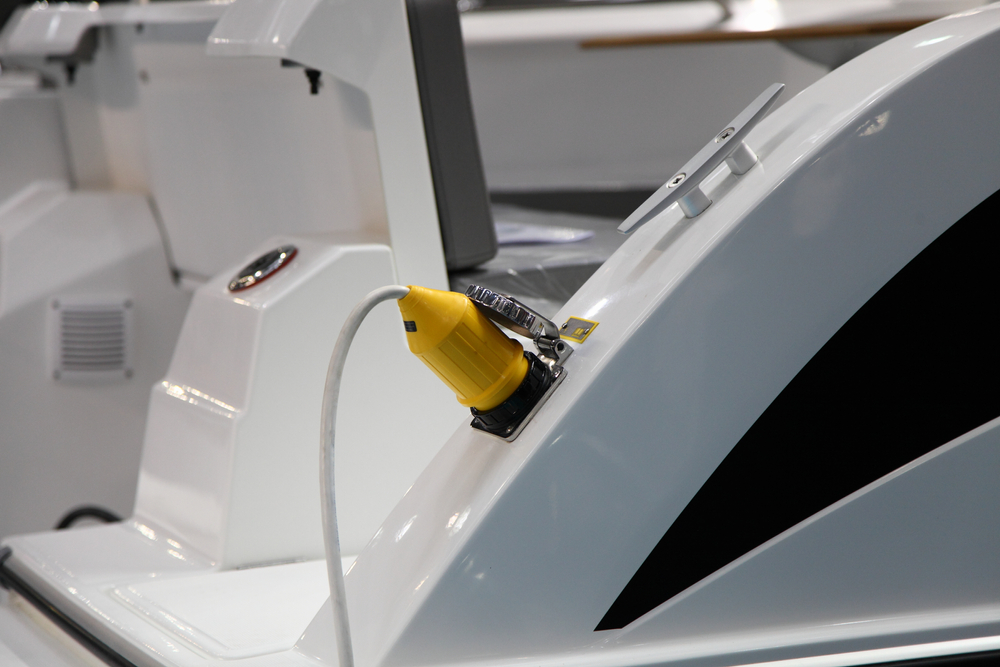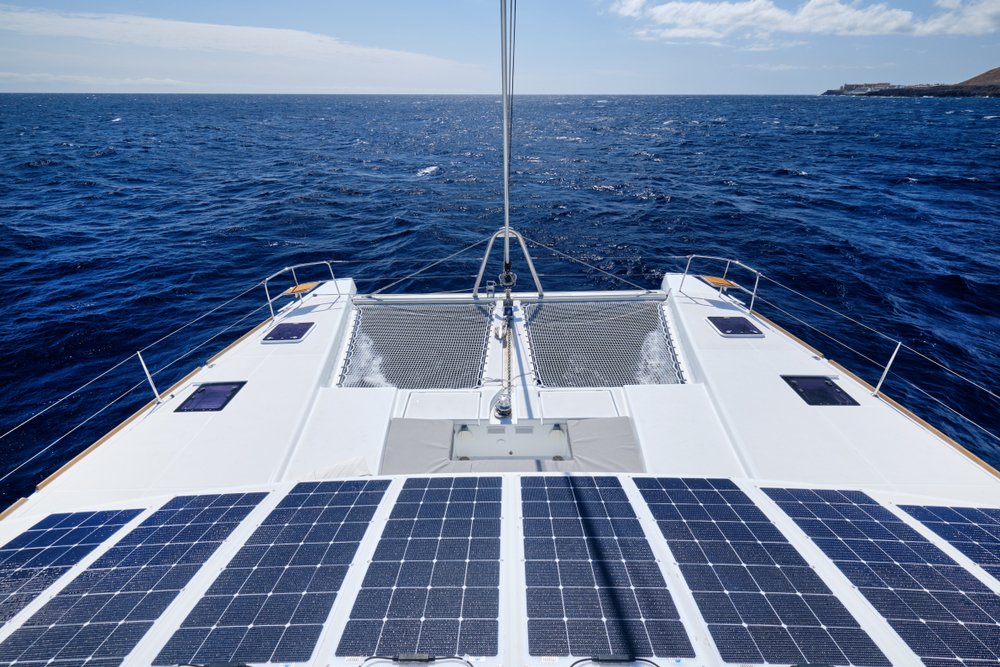

Even the least tech-savvy person today is interested in the characteristics of the electrical system onboard, first and foremost to ensure that they can charge their mobile phone.
Boats, like all vehicles, have a 12 Volt DC electrical system connected to batteries and the engine that recharges them. There are generally three batteries:
This means that 12 Volt power is available onboard at all times, similar to a car cigarette lighter.
.
.
220 Volt on board, the role of the Inverter
You'll also find a 220 Volt system onboard: something typically only switched on when the boat is connected to the mains in the marina to charge the batteries.

Through this cable, you can connect the boat to the 220 Volt AC shore power
Some boats also come with an inverter: an electronic device capable of converting the 12 Volt DC from the batteries into 220 Volt AC, like that of the household electrical system.
The power of these devices, when installed, does not exceed a few hundred Watts, which means that it is possible to connect some appliances for which we only have the 220 Volt power supply, but not appliances with high absorption (a hairdryer or a straightener, for example).
Many people look for an inverter as a must-have accessory to ensure that they can charge their mobile phone using the usual power supply. In reality, it is much easier and more effective to ensure that you charge your mobile phone with a USB adapter that you plug into the boat's cigarette lighter socket, just like you do in your car.
In addition to the adapter, I recommend that you bring along some USB plug splitters so that several crew members can charge simultaneously. Don't forget power banks and traditional power supplies for use ashore or in the marina.
The purpose of the inverter is to allow us to live on a sailing boat using devices for which we do not have a 12 Volt power supply.
We have already talked about devices such as mobile phones, tablets or power banks and in general all those that are powered via USB. For all other electronic devices with higher electricity consumption like computers, you can use 12 Volt power supplies. I recommend that you give it some thought if you plan to use it intensively, for example, if you are going to work remotely from your boat.
Apart from recharging existing devices, you will need your electricity for two purposes:
As far as the boat is concerned, we are thinking first of all of starting the engine, for which there is a dedicated battery so that we can always be sure to restart it and charge all the other devices.
As far as onboard services are concerned, we have the internal lights, which absorb very little power if they are LED (remember, however, to keep only those switched on in the room where we are), and the refrigerator, which absorbs around 50 Watts, which doesn't seem much. Still, we must consider that it works continuously.
So far, we have talked about power consumption, but how do we store the energy in the batteries?
A sailing boat used for leisure (rather than living) does not necessarily have the equipment for long sails as it does not usually require long periods of energy - autonomy. In this case, you have two options: recharging by connecting to the 220 Volt mains via the dedicated power chargers on the marina docks. The power you'll get from the chargers will provide you with 220-volt electricity, and in one night, you'll have recharged all batteries on board. This aspect is especially important when we are away from the port, a few hours a day of engine operation will compensate at least partially the energy used.
However, it is also possible to recharge the batteries through the engine generator, just like a car. In this case, I recommend keeping an eye on consumption so that you don't have to turn on the engine while stationary without needing it to charge the batteries,
Using the engine is not a particularly efficient method of recharging. I suggest being a little careful with consumption, for example, by periodically switching off the fridge. It is well insulated and can cope with intermittent operation without any problems, mainly if we help its thermal inertia with a few ice bricks.
.
.
If we need to keep the batteries charged for long periods away from the port, rather than the engine generator (not designed for this purpose), I recommend opting for a boat equipped with a boat generator. This accessory, also known as a generator set, consists of a diesel engine connected to a generator, enclosed in a soundproof container, and housed in a boat locker, specifically designed to produce electricity with maximum efficiency. This small power station is the solution for those who plan to stay "in the wild" for a long time or have significant power consumption on board.
When sailing, it is common to encounter globetrotting boats equipped with such devices, usually in roadsteads rather than ports. They can be expensive and not easily manageable.

However, they guarantee excellent operating time and eco-sustainability even when sailing for long cruises away from ports, without the risk of depleting the fuel supply to run the engine. These devices are undoubtedly useful on a boat. Still, with the possible exception of solar panels in certain circumstances, my view is that they're less suited for leisure sailors renting a boat for a week's holiday.
This post is written by Francesco Gambini. Francesco met sailing in Liguria 20 years ago. A fleet specialist in Sailogy, his favourite boat is the Dufour 310 Grand Large.


Our regular email newsletters include information about our boats, holiday ideas, destination insights and cultural briefings. You can unsubscribe at any time and we'll treat your data with respect, never passing on your details to third parties. Find full details of our data management in our Privacy policy page
By signing up, I agree to Sailogy's T&C's and Privacy policy

Looking for inspiration for your next sailing holiday? Packed with insights on trending sailing destinations plus stories from expert sailors and first-timers, our brand new digital magazine - Magister Navis - will guide your way to your next sail.
View magazine